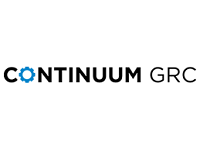What Is Operational Risk Management Software?
Operational Risk Management (ORM) software is a strong tool that assists firms in identifying, assessing, and mitigating potential operational hazards. It lets firms to proactively manage operational risks such as fraud, human error, regulatory compliance, and supply chain interruptions. ORM software enables firms to centrally manage and track risk-related activities, lowering the possibility of costly incidents and losses.
It outlines a complete framework for risk identification, assessment, control, and monitoring. One of the primary advantages of ORM software is its ability to simplify and automate risk management activities. This saves time while also ensuring consistency and accuracy in risk assessments and controls. Furthermore, having a consolidated platform for all risk-related data and operations enables firms to readily access real-time information and make data-driven choices.
Another key feature of ORM software is its capacity to provide analytical reports and dashboards. These give firms a comprehensive picture of their risk landscape, allowing them to prioritise and deploy resources efficiently. When choosing an ORM software, check for features like configurable risk assessments, automated alerts and notifications, third-party risk management, and connectivity with other corporate systems.
This ensures that the software matches your organization's specific requirements while also adapting to your changing risk environment. Overall, investing in ORM software can provide considerable benefits to firms, such as lower operational expenses, improved compliance and regulatory adherence, and increased overall risk management efficiency. Given the dynamic and ever-changing nature of risks, having a solid ORM software in place is critical for any organization wanting to reduce and manage operational risks proactively.
What Are The Recent Trends In Operational Risk Management Software?
Operational risk management software has grown in popularity and importance in the corporate sector as firms face ever-increasing risks and operational hazards. In recent years, we've seen many important developments arise in this software sector, all aimed at helping firms detect, assess, and manage operational risks.
1. Integration With Artificial Intelligence And Machine Learning: One of the most significant trends in operational risk management software is the incorporation of AI and ML capabilities. This enables the program to evaluate massive amounts of data in real time, detecting trends and potential problems before they worsen. Businesses can use AI and ML to be more proactive in their risk management methods, reducing possible losses.
2. Cloud-Based Solutions: Cloud computing has transformed the world of software, including operational risk management. The advent of cloud-based solutions has made it easier for businesses to access and use their risk management software from any location, at any time. This means that organizations may manage their risks and respond to changing business conditions, even when working remotely.
3. Automation And Workflow Management: Another emerging trend in operational risk management software is the incorporation of automation and workflow management capabilities. These sophisticated capabilities enable firms to expedite their risk management operations, lowering the possibility of human error while saving time and costs. Companies can use automated workflows to swiftly identify hazards, assign tasks, and track progress toward minimizing them.
4. Increased Customization: Modern operational risk management software provides more customization possibilities, allowing firms to adjust the software to their specific requirements. This means that firms can select the features and functionalities that are most appropriate for their operations rather than being confined by a one-size-fits-all solution. This tendency has made operational risk management software more adaptive and effective at managing the unique hazards that each firm faces.
5. Concentrate On Real-Time Monitoring: With the growing prevalence and severity of operational hazards, real-time monitoring has become an essential component of risk management. As a result, many operational risk management software solutions now include real-time monitoring capabilities, giving firms up-to-date information on potential risks and their implications. This enables faster reactions while reducing the possible impact of hazards on operations.
Benefits Of Using Operational Risk Management Software
Operational risk management software is a useful tool for firms to discover, assess, and reduce potential hazards in their operations. With increased competition, evolving regulatory requirements, and fast changing business environments, it is critical for businesses to have a strong risk management strategy in place.
In this buyer's guide, we'll look at the numerous advantages of utilizing operational risk management software and how it might assist your firm.
1. Determines Probable Risks: The most major benefit of employing operational risk management software is its capacity to detect possible dangers in your business operations. It employs modern algorithms and data analysis techniques to analyze your organization's processes, systems, and data for potential threats. By identifying risks ahead of time, you may take proactive steps to avoid them and the associated costs.
2. Improves Risk Assessment: Operational risk management software makes the risk assessment process more efficient. It allows you to collect data, assess risks, and prioritize them according to their likelihood and impact. A unified and automated approach makes it easier to identify critical risk areas and distribute resources efficiently.
3. Risk Mitigation: The program provides a comprehensive framework for successful risk management. It enables you to develop risk mitigation plans, assign responsibilities, and monitor progress. It also delivers real-time alerts and notifications to keep you informed of any changes or updates connected to the identified threats.
4. Ensures Compliance: With ever-changing regulatory regulations, it can be difficult for organizations to keep up with the current compliance standards. Operational risk management software keeps you compliant by centralizing all regulatory rules. It also allows you to monitor your compliance status, detect gaps, and take necessary action.
5. Improves Decision-Making: The program includes thorough reports, analytics, and dashboards to help you make informed decisions. Data-driven insights enable you to discover trends, patterns, and make proactive risk-mitigation decisions. It also allows you to monitor the effectiveness of risk management measures and alter them as needed.
6. Increases Efficiency: One of the primary advantages of employing operational risk management software is increased efficiency. It automates manual operations, streamlines paperwork, and removes the need for several systems. As a consequence, your staff may concentrate on strategic objectives instead of wasting time on administrative activities.
Important Factors To Consider While Purchasing Operational Risk Management Software?
When purchasing operational risk management software, several critical elements should be examined to guarantee you get the best solution for your organization's specific needs.
These considerations include functionality, compatibility, security, dependability, and support.
1. Functionality: Functionality is the first and most critical thing to consider while selecting a software. You should assess how well the program fits your organization's risk management objectives and practices. Some important elements to check for are risk assessment, incident tracking, reporting, and real-time monitoring.
2. Compatibility: Make sure the program is compatible with your existing systems and processes. The software should be compatible with your existing company tools, such as project management software or data analytics tools.
3. Security: The safeguarding of sensitive information is critical, particularly when dealing with risk management. Ensure that the program includes strong security measures including data encryption, role-based access control, and frequent security updates.
4. Reliability: The software should consistently produce accurate findings. It should also have a track record of stability, with few crashes or glitches.
5. Assistance: Adequate assistance is critical to the software's successful implementation and use. Look for a vendor who provides continuing technical assistance, training, and resources to address any issues or questions that may occur. Purchasing operational risk management software is a serious decision. By taking these crucial criteria into account, you can ensure that the software you choose fulfills your organization's requirements and aids in risk management. Remember to conduct thorough research and demos of several possibilities before making a decision to guarantee an informed purchase.
What Are The Key Features To Look For In Operational Risk Management Software?
Operational risk management software is an essential tool for firms to discover, assess, and reduce potential hazards in their operations. With the rising complexity and unpredictability of the business world, enterprises must have a strong operational risk management software in place. However, with so many options on the market, it can be difficult for customers to choose the correct one.
To aid in your decision-making process, these are the essential elements you should look for in operational risk management software:
1. Risk Identification And Assessment: The software should be capable of identifying and assessing risks in a variety of business domains, such as compliance, finance, technology, and operations. It should also provide tools for prioritizing risks based on likelihood and impact.
2. Risk Monitoring And Reporting: Real-time monitoring and reporting tools enable firms to stay up to current on changes in the risk landscape and take appropriate action quickly. Look for software that has customisable dashboards, alarms, and risk heat maps for simple tracking and reporting.
3. Incident Management: If a risk develops into an issue, the software should include an incident management capability that allows firms to easily track and resolve the occurrence while minimizing its impact on operations.
4. Compliance Management: Given the stringent regulatory requirements, compliance management is a vital component of operational risk management. The software should help firms document and manage compliance practices, as well as conduct frequent audits.
5. Risk Mitigation Strategies: A strong operational risk management software should include tools and resources for firms to design and implement effective risk mitigation strategies. This can contain elements like scenario analysis, action planning, and task management.
6. Integration: Look for software that is compatible with your current systems and data sources, such as finance, compliance, and operational data. This will provide a holistic perspective of hazards across the organization, allowing for more informed decisions.
7. User-Friendly Interface: The program should have a simple interface with easy navigation and a visually appealing design. This will make it easy for users at all skill levels to comprehend and interact with the software.
8. Customization And Scalability: Each firm has distinct risk management requirements. The software should allow for customization to fit the solution to your organization's needs. It should also be scalable to account for future expansion and changing risk variables.
9. Training And Assistance: Proper training and assistance are essential for successful software uptake and utilization. Look for vendors who offer comprehensive training and continuous technical assistance. When comparing operational risk management software choices, keep these crucial elements in mind. Remember to prioritize your organization's specific objectives and requirements while selecting software to meet operational risk management concerns. With the correct software, you can control hazards ahead of time and secure your company's long-term success.
Why Do Businesses Need Operational Risk Management Software?
Operational risk management software is an essential resource for firms of all sizes and sectors. It provides a complete framework for businesses to detect, assess, and manage potential risks to their operations. In today's fast-paced and networked business environment, the necessity for such software is more apparent than ever. One of the primary reasons that organizations use operational risk management software is to maintain continuity and stability in their operations.
This program takes a methodical approach to identifying and assessing operational risks, allowing businesses to proactively handle potential hazards before they become costly disruptions. Businesses that use a centralized risk management platform may stay on top of potential hazards, avoid losses, and keep operations running smoothly. Another important feature of operational risk management software is the capacity to improve compliance and governance.
With an expanding number of rules and compliance requirements in various businesses, noncompliance can result in significant fines and reputational harm. Businesses can keep ahead of compliance issues by using operational risk management software, which includes automated processes, real-time monitoring, and reporting capabilities.
It eliminates the need for manual data collecting and minimizes the danger of human error, ensuring that businesses follow standards and maintain their brand. In addition, operational risk management software allows firms to continuously enhance their risk management systems. Companies that have a central repository for risk data might obtain insights into their operations and spot patterns or trends in possible threats.
This information may then be used to make data-driven decisions, strengthen risk management techniques, and boost overall business performance. Furthermore, in today's global corporate environment, managing risks in a single location or business unit is no longer enough. Operational risk management software enables firms to monitor and manage risks across different locations, departments, and processes, providing a comprehensive perspective of their risk landscape. This allows firms to discover interrelated risks and design mitigation measures that account for all potential consequences.
How Much Time Is Required To Implement Operational Risk Management Software?
The time necessary to install operational risk management software varies depending on a number of factors, including your organization's size and complexity, the exact features and functionalities you desire, and the level of customization needed. However, the usual time ranges from a few weeks to many months. One of the most important variables influencing the implementation timeline is your organization's readiness.
This involves a thorough grasp of your risk management processes, the data and information that must be integrated into the software, and the roles and responsibilities of the team members participating in the implementation. Another important consideration is the amount of support and training given by the software manufacturer.
A quality vendor will not only give a user-friendly interface, but also adequate tools and training to assist your staff in fully utilizing the software's capabilities. This can greatly minimize installation time while also ensuring a smooth transition to the new system. Furthermore, the level of modification required can impact the implementation timeline.
If your firm has unique processes or requirements, the software may need to be customized, which can take longer than a typical setup. It is also important to emphasize that the implementation process is continuous rather than one-time. It takes continual monitoring and refining to guarantee that the software meets your organization's evolving demands and effectively mitigates risk.
What Is The Level Of Customization Available In Operational Risk Management Software?
Operational risk management software is an essential tool for firms to discover, assess, and manage potential hazards in their operations. One of the most important elements to consider when comparing different software solutions is the level of customization available. This refers to the software's capacity to be tailored to unique company demands and requirements.
Here's what you should know about the degree of customisation in operational risk management software:
1. Customizable Risk Assessment Framework: A excellent operational risk management software has a configurable risk assessment approach. This means that businesses can tailor the risk assessment process to meet their own risk management needs. This includes the option to add or delete risk elements, establish risk thresholds, and tailor risk severity levels.
2. Flexible Reporting And Dashboards: Another part of operational risk management software customization is the ability to create bespoke reports and dashboards. This enables businesses to manage and monitor hazards in real time, as well as deliver crucial information in the most effective way for their purposes. Businesses can specify which indicators and data to include in their reports and dashboards, resulting in a comprehensive and individualized overview of their risk management initiatives.
3. User-Specific Access And Permissions: Customization includes user access and permissions. This means that various users can have varying levels of access to the software depending on their jobs and responsibilities. For example, top-level managers may require complete access to all functionalities, whereas front-line staff may just require access to a few modules. This user-specific customization guarantees that critical information is only accessible to the appropriate individuals, preserving data security and confidentiality.
4. Integration With Existing Processes: Operational risk management software should smoothly interact with a company's existing processes and systems. This enables a more tailored and streamlined risk management approach that is aligned with the individual operations and workflows of a company. Businesses can construct a unified risk management system that meets their specific requirements by connecting it with additional tools and technologies.
Which Industries Can Benefit The Most From Operational Risk Management Software?
Operational Risk Management Software (ORM) is a crucial tool for firms seeking to efficiently manage and mitigate risks associated with their day-to-day operations.
While deploying ORM software can assist any sector, certain industries will naturally benefit the most from its features and capabilities.
1. Financial Services: The financial services business is highly regulated and entails sophisticated processes, making it vulnerable to fraud, compliance breaches, and cybersecurity threats. ORM software can assist firms in this area in successfully identifying, assessing, and managing risks, maintaining regulatory compliance and protecting their reputation.
2. Manufacturing: The manufacturing business is strongly reliant on supply chains, logistics, and production processes, making it vulnerable to operational risks such as equipment breakdowns, supply shortages, and quality control concerns. ORM software can help manufacturers monitor their processes, detect potential hazards, and take proactive steps to reduce them, resulting in increased efficiency and cost savings.
3. Healthcare: Inadequate risk management can have major ramifications for patient safety and regulatory compliance. ORM software can assist healthcare businesses in tracking and assessing potential risks such as data breaches, medical errors, and regulatory noncompliance, allowing them to take preventive measures while maintaining the highest standards of patient care.
4. Oil And Gas: The oil and gas industry is high-risk, with safety mishaps, environmental problems, and supply chain disruptions all potential hazards. ORM software can assist organizations in this industry identify and assess risks, comply with regulations, and respond to incidents, allowing them to operate safely and efficiently.
5. Retail: Retailers face a variety of operational risks, including supply chain interruptions, cybersecurity attacks, and reputational damage. ORM software can help track and manage these risks, ensuring seamless operations and increased customer satisfaction. Overall, any industry that wishes to proactively monitor and eliminate operational risks will profit greatly from deploying ORM software. It allows firms to gain a comprehensive understanding of their operations, identify potential hazards, and adopt preventative or mitigation steps, resulting in increased efficiency, compliance, and bottom-line benefits.
Conclusion
To summarize, operational risk management software is an invaluable tool for firms seeking to reduce potential risks and maintain smooth operations. By automating and optimizing risk management procedures, these software solutions improve decision-making efficiency, accuracy, and visibility in real time. When looking for operational risk management software, you should first establish your individual requirements and goals.
This can help you limit down your alternatives and locate software that meets your company's specific needs. When comparing software suppliers, consider issues such as usability, integration capabilities, scalability, and customer support. In addition, check for capabilities like as risk assessment, incident tracking, compliance management, and reporting to provide a complete solution.
It is also critical to thoroughly research each software's pricing structures and contract terms, as these can have a significant impact on your budget and ROI. Don't be afraid to request demos or trials to have a better grasp of a software's features and usability. Finally, selecting the appropriate operational risk management software will tremendously help your firm in the long run. With a solid and dependable solution in place, you can proactively detect and manage risks, protect your business operations, and make more informed decisions to drive development and success.
















